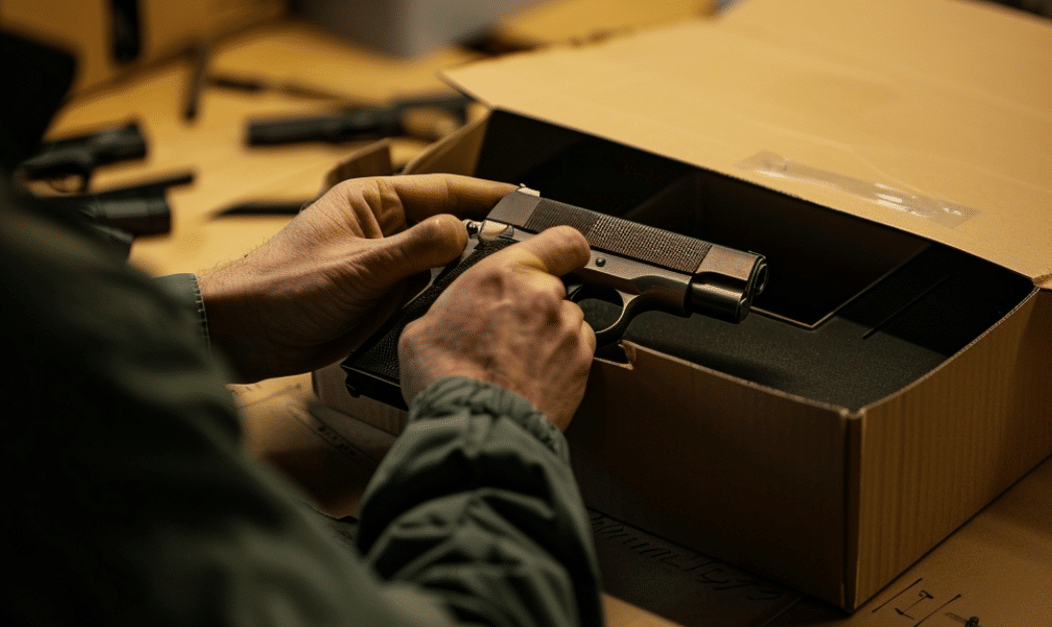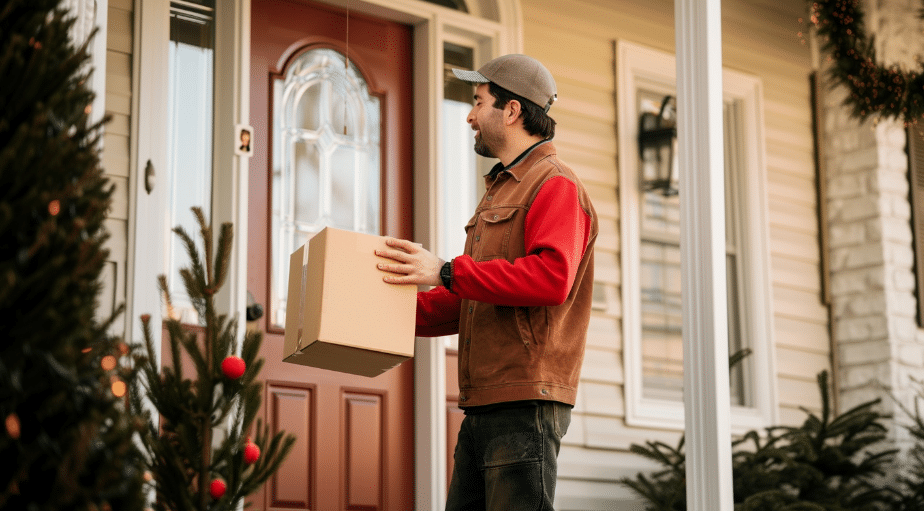This comprehensive guide explains how to legally mail a firearm in the U.S., covering federal and state laws, carrier requirements, and essential tips for safe and lawful firearm shipping.
Mailing guns is a topic that often stirs confusion and concern among gun owners in the United States. With a complex web of federal and state laws governing the transport and transfer of firearms, it’s essential to have a clear understanding of the legal requirements and best practices to ensure compliance and safety. Whether you’re a seasoned gun owner, a firearms dealer, or someone new to the world of guns, knowing how to legally mail a firearm is crucial to avoid legal pitfalls and ensure the safe delivery of your firearm to its intended destination.
Firearms play a significant role in American culture, from hunting and sport shooting to self-defense and collecting. As such, there are various scenarios where mailing a firearm might be necessary. You might need to send your firearm for repairs, customization, or sale. Perhaps you’re relocating and want to ensure your firearms reach your new home safely, or you might be traveling and prefer to mail your firearm ahead rather than checking it as baggage. Regardless of the reason, understanding the legal framework is the first step in navigating the process smoothly.
Throughout this comprehensive guide, we will delve into various practical scenarios where mailing a firearm is necessary. From business FFL to FFL transfers and self-to-self shipments to using an FFL at the destination, each situation requires a tailored approach to ensure legality and safety. We will also explore common pitfalls and provide detailed steps to avoid them, ensuring that your firearm reaches its destination without incident.
Table of Contents
Safety and Responsibility
As a responsible gun owner, prioritizing safety and legality is paramount. Properly mailing a firearm is part of responsible gun ownership. This guide will provide you with the knowledge and tools needed to navigate the process effectively, ensuring compliance with federal and state laws while maintaining the highest standards of safety.
By understanding and following the legal requirements and best practices outlined in this guide, you can confidently and securely mail your firearm, whether for repairs, sales, or travel purposes. Always remember to stay informed, consult legal professionals when needed, and prioritize safety in all your firearm-related activities.
Federal and State Laws
Federal laws, overseen by the Bureau of Alcohol, Tobacco, Firearms and Explosives (ATF), stipulate that only licensed firearms dealers (Federal Firearms Licensees or FFLs) can mail firearms to another FFL. Private individuals are generally not permitted to mail firearms directly to each other. However, they can send a firearm to an FFL in the recipient’s state, who will then complete the necessary transfer process with that FFL.
In addition to federal laws, state laws must also be considered. Some states have additional restrictions or requirements beyond federal regulations when it comes to mailing guns. Ensure that you are aware of the laws in both the shipping and receiving states.
Step-by-Step Guide to Mailing Guns Legally

1. Ensure Eligibility
Confirm that both the sender and the recipient are legally eligible to possess firearms. The recipient must hold a valid FFL or be a licensed dealer. It is illegal to mail a firearm to someone who is prohibited from possessing firearms, such as individuals with felony convictions or certain restraining orders.
2. Prepare the Firearm
The firearm must be unloaded before shipping. Ensure there is no ammunition in the chamber, magazine, or any part of the firearm. Use a sealed, locked container for the firearm. Loaded and unloaded magazines should not be kept inside the firearm. Ammunition should be in an approved original cardboard, metal, or wood box. Labeling the package as containing a firearm or ammunition is not required and can be risky.
3. Select a Shipping Carrier
Choose a carrier authorized to transport firearms. The United States Postal Service (USPS), United Parcel Service (UPS), and FedEx all have specific regulations and services for shipping firearms.
- USPS: Only rifles and shotguns can be mailed through USPS. Handguns are restricted to licensed dealers or manufacturers. USPS requires proper documentation and labeling for firearm shipments.
- UPS and FedEx: These carriers allow the shipment of handguns, rifles, and shotguns but have specific requirements. Firearms must be shipped through their respective overnight services to minimize the risk of loss or theft. Packages must be clearly labeled and include all necessary documentation.
4. Declare the Shipment
Notify the carrier that the package contains a firearm. Failure to declare the shipment can result in serious legal consequences. The carrier will guide you on the required documentation and labeling. For example, UPS and FedEx require firearms to be shipped via next-day air services and properly marked. The shipper must also sign an agreement indicating compliance with all applicable laws and regulations.
5. Follow State Laws
Compliance with state laws is essential. Some states have additional restrictions or requirements beyond federal regulations. Ensure you are aware of and comply with the firearm laws in both the shipping and receiving states.
6. Maintain Records
Keep detailed records of the shipment, including receipts, tracking numbers, and any correspondence with the carrier and the recipient. These records are important for proving compliance with legal requirements and for tracking the shipment in case of issues. Retain copies of any documentation provided by the FFL or shipping carrier.
Special Cases and Processes

Process 1: Business FFL to FFL Transfer
Some gun shops will mail your firearm to another approved FFL business for a fee. This is usually the easiest way to send a pistol if you don’t have an FFL. The packaging must meet the guidelines of USPS, UPS, or another approved courier service.
Process 2: Self to Self with FFL
If you have an FFL, you can mail your firearm to your final destination, ensuring it is unloaded. The recipient (even if it is yourself) must have a valid FFL. The firearm should be addressed to you and include an “in the care of” endorsement preceding the name of the person receiving the package. You must be present to receive the package; otherwise, it will be returned to the sender.
Process 3: (FFL) Self to FFL Destination
If you have a friend at your destination with an FFL, you can mail the firearm to them, and they can hold it for you until you arrive. This process only works if you have an FFL and can guarantee you’ll be at the destination when the firearm arrives.
Mailing Firearms for Repairs or Customization

When mailing guns for repairs or customization, follow these additional steps:
- Confirm the Recipient’s Credentials: Ensure that the gunsmith or repair facility has a valid FFL.
- Document the Condition: Take detailed photographs and notes of the firearm’s condition before shipping.
- Include Instructions: Provide clear instructions for the repair or customization work to be performed.
- Arrange Return Shipping: Ensure the gunsmith or repair facility follows all legal requirements for return shipping.
Mailing Firearms for Sale or Transfer
When mailing a firearm for sale or transfer:
- Verify the Buyer’s Credentials: Confirm the buyer has a valid FFL or can legally receive the firearm in their state. Private sales must be conducted through an FFL.
- Complete a Bill of Sale: Prepare a bill of sale that includes the details of the transaction. Both parties should retain copies.
- Transfer Through an FFL: Ship the firearm to an FFL in the buyer’s state. The FFL will conduct the necessary background check and transfer process.
Common Pitfalls to Avoid
- Failing to Declare the Shipment: Always inform the carrier that the package contains a firearm.
- Shipping to Prohibited Persons: Ensure the recipient is legally allowed to possess firearms.
- Improper Packaging: Use appropriate packaging materials to prevent damage and ensure safety.
- Ignoring State Laws: Be aware of and comply with state-specific regulations.
Can I Legally Mail Guns To Myself In Another State?

According to USPS guidelines, if you do not have an FFL, you can still mail your shotgun or rifle outside your state as long as it is addressed to yourself in the care of another. This is primarily for hunting trips and similar scenarios. The rifle or shotgun should:
- Be addressed to you.
- Include an “in the care of” endorsement immediately preceding the name of the person receiving the firearm.
- Be opened only by you.
- Follow USPS rules for shipping firearms outlined in 432.3
According to the ATF, you are able to send firearms directly to yourself in the same manner.
A person may ship a firearm to him or herself in care of another person in the state where he or she intends to hunt or engage in any other lawful activity. The package should be addressed to the owner “in the care of” the out–of–state resident. Upon reaching its destination, persons other than the owner may not open the package or take possession of the firearm.
Since USPS doesn’t allow the shipping of your handgun to yourself, you would need to utilize the services of UPS, FedEX, or another accepting courier.
Mailing Firearms vs. Checking Them as Baggage
Many people mail their firearms instead of checking them as baggage when traveling. While this can be convenient, it is essential to ensure you are following all legal requirements. Checking a firearm as baggage is often more straightforward, especially if you do not have an FFL. However, if you choose to mail your firearm, follow the steps and guidelines outlined in this article.
Legal Consequences of Non-Compliance
Non-compliance with federal and state laws when mailing firearms can result in severe penalties, including fines and imprisonment. Ignorance of the law is not a defense, so it is crucial to be thorough and diligent. Ensure you are fully informed about the legal requirements and seek professional advice if needed.
FAQs About Legally Mailing Guns
Can I Mail a Gun to Myself in Another State?
Yes, it is legal to mail a firearm to yourself in another state. For example, if you are traveling and want to have your firearm available at your destination, you can mail it to yourself. Ensure the package is properly declared and follow all carrier regulations. Upon arrival, the package should only be opened by you.
Can I Mail Ammunition?
Yes and No. Ammunition cannot be mailed through USPS. It must be shipped through carriers like UPS or FedEx, and specific regulations must be followed. These carriers have designated services for shipping hazardous materials, including ammunition, and require proper labeling and documentation.
What Should I Do if My Firearm is Lost or Stolen During Shipping?
If your firearm is lost or stolen during shipping, immediately contact the shipping carrier to report the loss. Additionally, report the incident to local law enforcement and the ATF. Keep all documentation related to the shipment to assist in the investigation and recovery process.
Conclusion
Mailing a firearm legally requires a thorough understanding of federal and state laws, as well as compliance with the specific requirements of shipping carriers. By following the steps outlined in this guide and taking necessary precautions, you can ensure the safe and lawful transport of firearms. Always prioritize safety, adhere to legal requirements, and seek professional advice if needed.
Safety Tip: Always double-check the firearm is unloaded before packing it for shipment to ensure safe handling and compliance with shipping regulations.
Legal Disclaimer
The information provided in this article is for general informational purposes only and should not be considered legal advice. While every effort has been made to ensure the accuracy of the information, laws and regulations regarding the mailing and transport of firearms are subject to change and may vary by jurisdiction. It is your responsibility to comply with all federal, state, and local laws governing the mailing, shipping, and transport of firearms.
We recommend consulting with a qualified legal professional or contacting the Bureau of Alcohol, Tobacco, Firearms and Explosives (ATF) or your local law enforcement agency for specific advice and guidance.












![[PRODUCT REVIEW] Leatherman Signal Multi-tool For Everyday Carry](https://imagedelivery.net/sbm_lYeJbALkepJgtmRD5w/concealednation.org/2016/11/20161125_185910-1.jpg/w=728,h=381)

